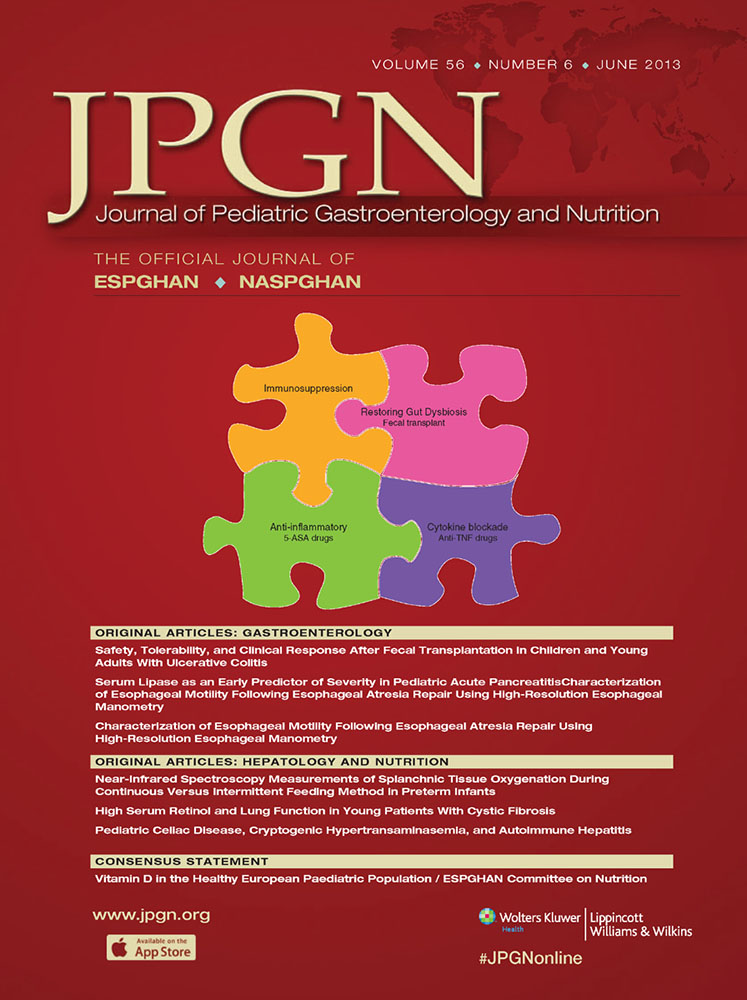High Helicobacter pylori Resistance to Metronidazole and Clarithromycin in Brazilian Children and Adolescents
The study was supported by Fundação de Amparo à Pesquisa do Estado de São Paulo, FAPESP.
The authors report no conflicts of interest.
ABSTRACT
Objective:
The aim of the present study was to assess the primary and secondary resistance of Helicobacter pylori strains to clarithromycin, amoxicillin, furazolidone, tetracycline, and metronidazole, the conventional antibiotics presently used in Brazilian children and adolescents.
Methods:
Seventy-seven consecutive H pylori strains, 71 of 77 strains obtained from patients without previous eradication treatment for H pylori infection, and 6 strains from patients in whom previous eradication treatment had failed.
Results:
Global rate of resistance was 49.3% (38/77): 40% of strains were resistant to metronidazole, 19.5% to clarithromycin, and 10.4% to amoxicillin. All of the tested H pylori strains were susceptible to furazolidone and tetracycline. Multiple resistance were detected in 18.2% (14/77 patients) of the strains: 6 of 14 (43%) simultaneously resistant to clarithromycin and metronidazole; 5 of 14 (36%) to amoxicillin and metronidazole; 2 of 14 (14%) to amoxicillin, clarithromycin, and metronidazole; and 1 of 14 (7%) to clarithromycin and amoxicillin.
Conclusions:
The high resistance rate to metronidazole and clarithromycin observed in clinical H pylori isolates can exclude these antimicrobials in empirical eradication treatment in Brazil. Otherwise, furazolidone and tetracycline presented no resistance. Properly assessing the risks and benefits, these 2 antimicrobials and their derivatives could be used in empirical eradication schedules, both associated with amoxicillin, which showed a low resistance rate despite its wide use in pediatric patients.




